
Magnificent 2300-Year-Old Scythian Woman’s Boot: A Timeless Fashion Statement
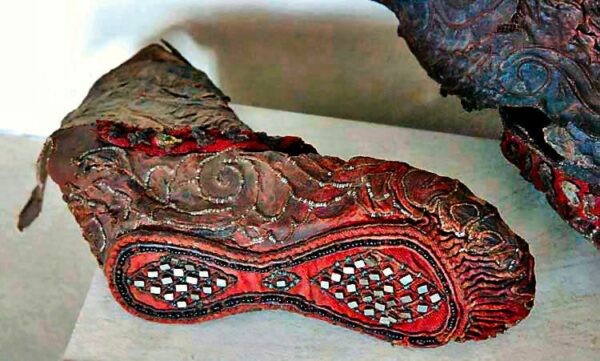
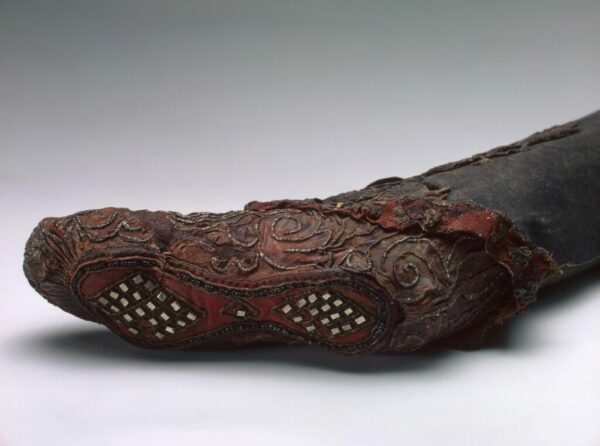

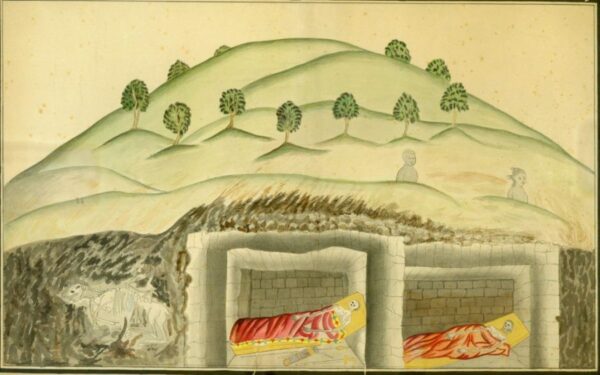
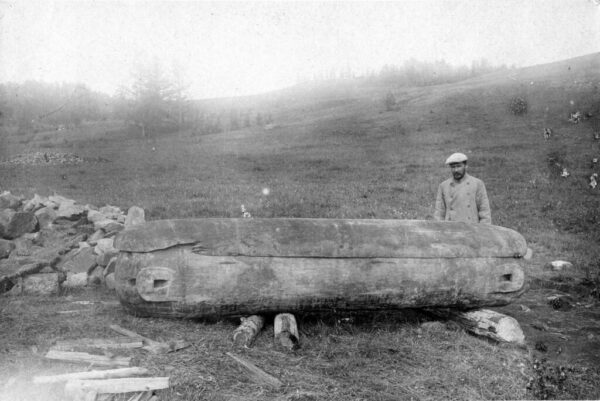

Deep within the rugged Altai Mountains lies a remarkable artifact that has fascinated historians, archaeologists, and fashion enthusiasts around the world. A 2,300-year-old boot belonging to a Scythian woman, exquisitely adorned with intricate beadwork and preserved in almost flawless condition, offers a rare glimpse into the sophisticated artistry, style, and cultural richness of this nomadic ancient civilization.
Source: State Hermitage Museum: Southern Siberia/Pazyryk
Unearthed during an archaeological excavation in 1948, this boot is believed to have belonged to a woman of high social rank, as evidenced by its exceptional craftsmanship and lavish design. The sole, made from soft red leather, is decorated with a striking geometric pattern embellished with shimmering pyrite crystals and tiny black beads. Such detailed workmanship and the use of precious materials strongly suggest that this boot was far more than a practical item—it was a powerful symbol of wealth, prestige, and identity within Scythian society.
The preservation of the boot owes much to the unique environmental conditions of the Altai Mountains, where permafrost helped safeguard countless artifacts. The Scythians were a nomadic people who roamed the vast Eurasian steppes, and their rich cultural heritage includes exceptional art, intricate metalwork, and elaborate burial practices. Their funerary customs, which involved interring the deceased alongside treasured possessions and horses, created a remarkable time capsule that continues to reveal secrets from their world.
The discovery of the boot has sparked lively discussions among historians and fashion experts. Some speculate it was made exclusively for burial ceremonies, designed to honor the dead with the finest attire. Others argue it might have been worn by a woman who held a unique status—perhaps one who traveled infrequently or held a ceremonial role—explaining why the delicate sole was so intricately decorated. The beadwork on the sole, intended to be seen when the wearer was seated, highlights the Scythian appreciation for appearance and personal expression, reflecting a society that valued aesthetics as much as utility.
Beyond its beauty, the boot sheds light on broader Scythian craftsmanship techniques. The use of pyrite crystals, a mineral that sparkles like gold, alongside carefully sewn beads, reveals advanced knowledge of materials and an artistic vision that seamlessly blended function with ornamentation. These skills extended beyond footwear to other aspects of Scythian life, such as horse trappings and weaponry, which were equally decorated with symbolic motifs expressing power, spirituality, and social hierarchy.
This boot stands as a lasting testament to the enduring influence of fashion and the creativity of ancient civilizations. It reminds us that despite the passage of millennia, the human desire to create beauty, convey status, and express identity through clothing remains a universal and timeless pursuit. By studying these ancient artifacts, we gain not only historical knowledge but also an appreciation for the artistry that continues to inspire designers and historians today.
News in the same category


Humanity Has Officially Found 6,000 Exoplanets, NASA Announces

There’s A 90% Chance of Black Hole Explosion in the Next Decade, Scientists Say

Prime views of the Andromeda Galaxy and Ceres—October 2

Northern Lights Could Be Seen in Northern U.S. — Sept 30 – Oct 1, 2025

Alnitak, Alnilam, and Mintaka: Orion’s Belt Stars Thousands of Light-Years Away

Humanity Preserved: A 5D Crystal Holds 360 TB of Our Genome to Outlast Civilization

Researchers make groundbreaking discovery about ChatGPT after testing it with 2,400 year-old math problem

Why this city has introduced a screen time limit of 2 hours per day

The Truth Behind the Bermuda Triangle May Be Scarier Than UFOs

Over 99% of peer-reviewed studies confirm climate change is real and driven by humans

Passenger lands in hospital after humiliating TSA spat over stubborn jewelry

A Man Knocked Down His Basement Wall, Discovering Ancient Underground City That Housed 20,000 People

Mind-Blowing Cloud Formations You Probably Haven’t Seen Before

On the southern edge of the world, a waterfall runs red as blood

Rare reddish-orange snowy owl in Huron County captivates birdwatchers

Wildlife Crossings: A Vital Solution for Highway Safety and Biodiversity Conservation

Photographs reveal first glimpse of uncontacted Amazon community

Floating Gardens on Parking Lot Roofs: Japan’s Green Revolution
News Post

Aloe Vera and Cinnamon Remedy: Natural Benefits for Eye Health, Immunity, and Healing
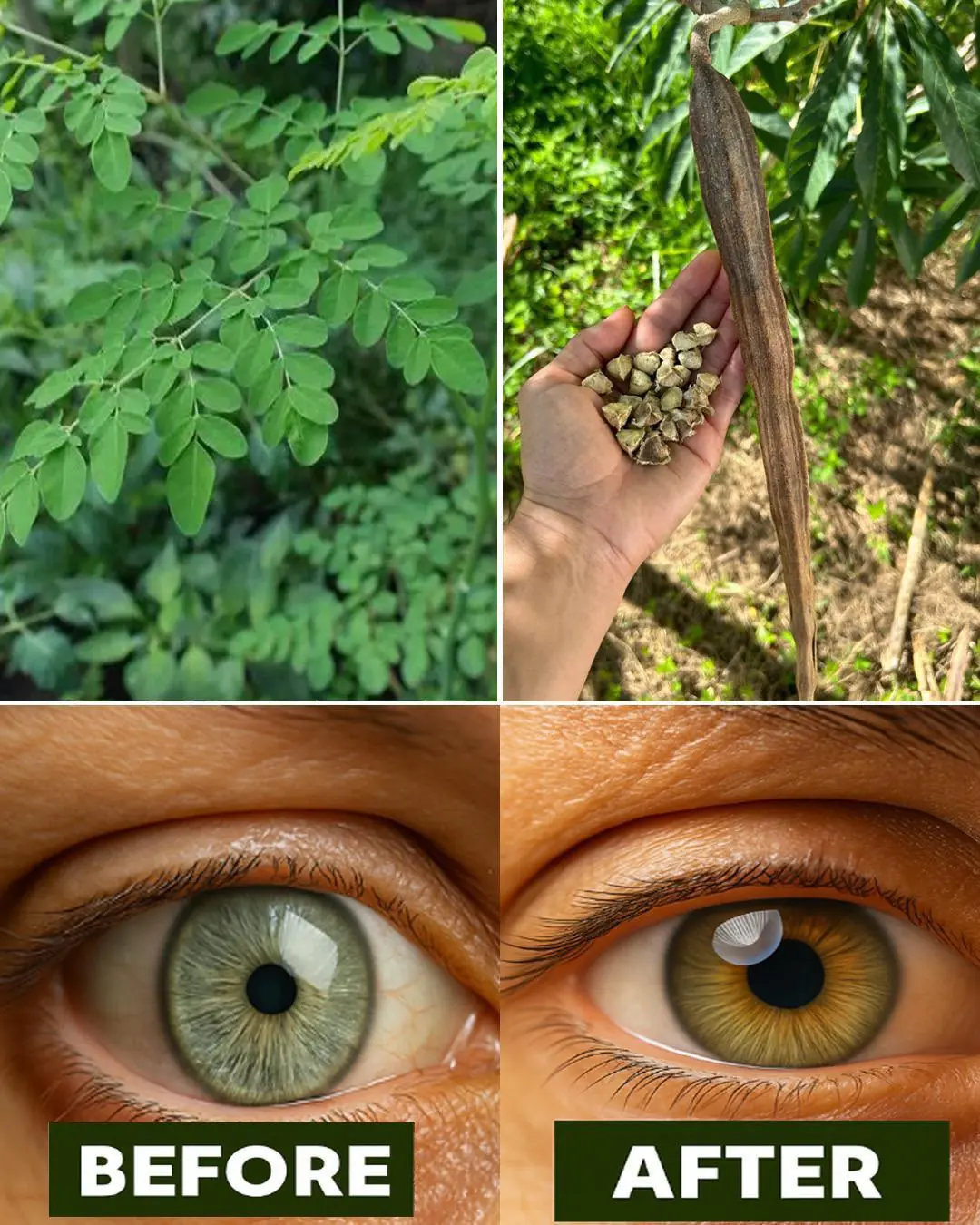
12 Powerful Benefits of Moringa Seeds

Goldenberries (Physalis peruviana): A Nutrient-Packed Powerhouse for Health and Vision

Oregano: The Golden Herb for Eye Health

Some of the Benefits of Castor Leaves and the Seed
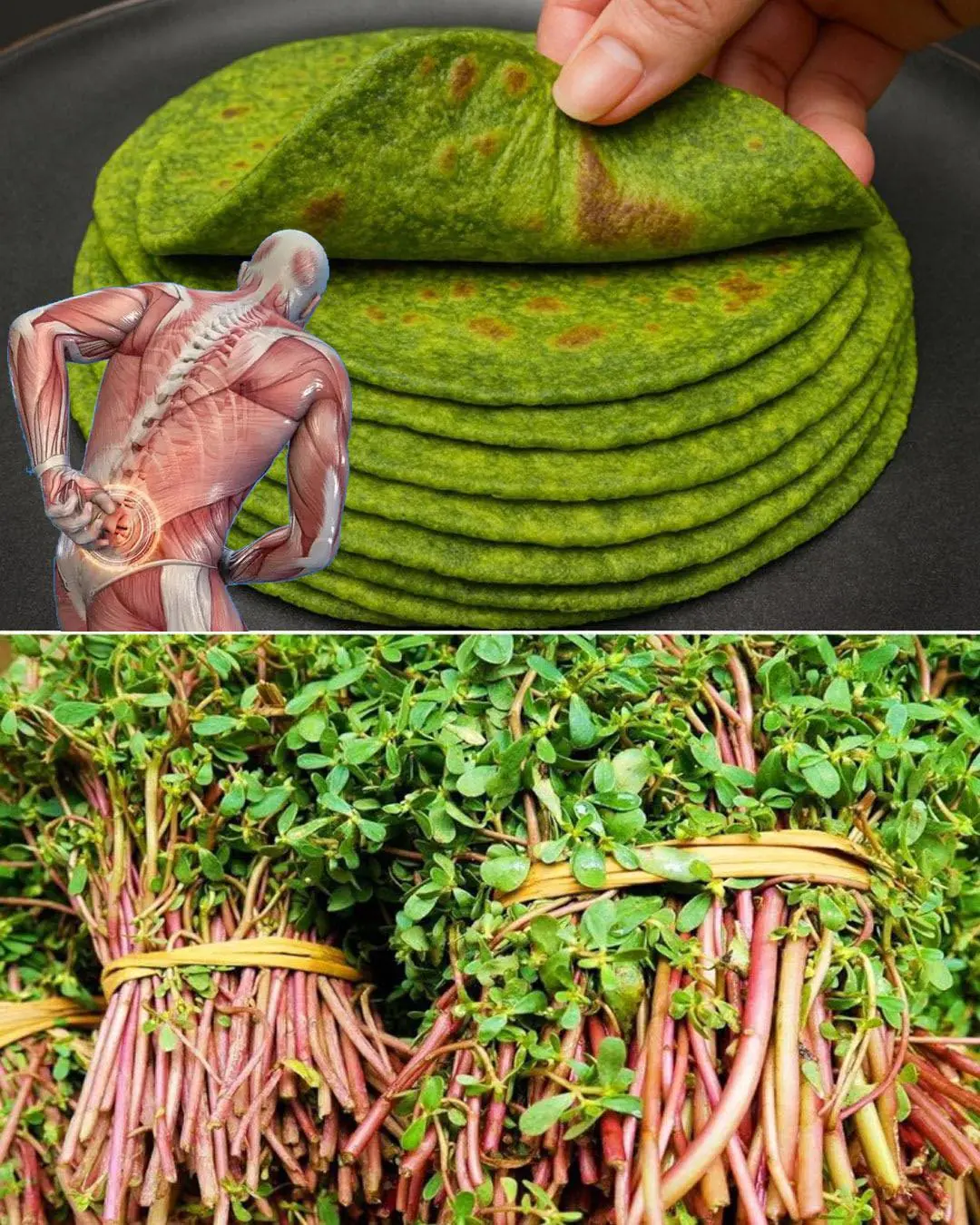
10 Benefits and uses of purslane

Chanca Piedra (Stonebreaker): Benefits and Uses

Do you need to unplug the rice cooker after the rice is cooked: The surprising answer November 27, 2024

7 Benefits Of Papaya Seeds & How To Consume Them Correctly

Bougainvillea likes to 'eat' this the most, bury it at the base once and the flowers will bloom all over the branches

The elders say: "If you put these 3 things on top of the refrigerator, no matter how much wealth you have, it will all be gone." What are these 3 things?

Can rice left in a rice cooker overnight be eaten? Many people are surprised to know the answer.

After boiling the chicken, do not take it out immediately onto a plate. Do one more thing to make sure the chicken is crispy, the meat is firm, and the skin does not fall apart when cut.

Cut this fruit into small pieces and put it in the pot to boil the duck: The bad smell is gone, the meat is fragrant, soft and flavorful.

Warts on Hands: Causes and Effective Natural Treatments

Medicinal Health Benefits of Turmeric, Curcumin and Turmeric Tea Based on Science

4 ways to preserve green onions for a whole month without spoiling, fresh as new

The best way to lower blood pressure fast!

9 Habits You Need To Adopt Today To Stop Alzheimer’s or Dementia Before It Starts
